Demeter
View All Tags
Demeter’s most famous myth centers around the abduction of her daughter, Persephone, by Hades, the god of the Underworld. According to the myth, while Persephone was gathering flowers, she was kidnapped by Hades and taken to his realm. Demeter, devastated by the loss of her daughter, withdrew from her divine duties, causing the earth to become barren and unproductive. The ensuing famine threatened humanity’s survival. In desperation, Demeter searched for Persephone and, upon discovering her in the Underworld, struck a deal with Hades. Persephone would spend part of the year with Demeter on earth, and part of the year with Hades in the Underworld. This myth was symbolic of the seasonal cycle: Demeter’s mourning during Persephone’s absence represented the winter months, when the earth was barren, while her joy at Persephone’s return marked the spring and summer months of growth and abundance.
As a goddess of fertility, Demeter was associated with the earth’s abundance and the cycles of planting and harvesting. She was worshipped through agricultural rituals and festivals, with one of the most important being the Eleusinian Mysteries, celebrated in honor of Demeter and Persephone. These mysteries, held annually in the city of Eleusis, became one of the most significant religious rites in ancient Greece. The festival was centered around the themes of life, death, and rebirth, mirroring the agricultural cycles that Demeter presided over. Initiates of the mysteries were promised a blessed afterlife, reflecting the belief that Demeter’s power could not only sustain life on earth but also provide hope for an existence beyond death.
In addition to her role as the goddess of agriculture, Demeter also held influence over the social and moral aspects of life, particularly with regard to marriage and family. She was seen as a protector of the family unit, and her associations with fertility extended to the birth of children. Temples to Demeter were often situated in areas of fertile land, and the goddess was frequently invoked in agricultural rituals, prayers for a good harvest, and other rites to ensure the prosperity of the community.
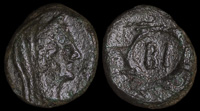
Bisanthe, Thrace 300-200 BCE

Dyme, Achaia 300-250 BCE
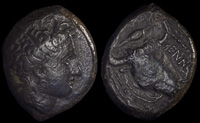
Henna, Sicily 339-335 BCE
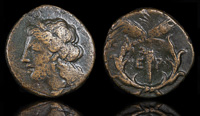
Hermione, Argolis 360-310 BCE
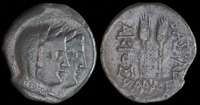
Kings of Scythia, Akrosas 195-190 BCE
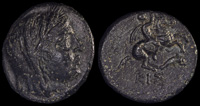
Kisthene, Mysia 4th century BCE
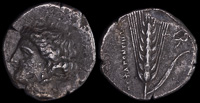
Lucania, Metapontion 400-340 BCE

Magnesia ad Sipylos 2nd-1st centuries BCE
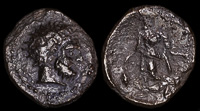
Mallos, Cilicia 4th century BCE
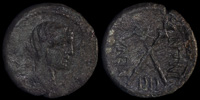
Menainon, Sicily 275-212 BCE

Messene, Messenia 370-330 BCE
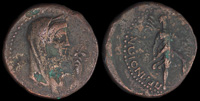
Perinthos, Thrace 2nd-1s centuries BCE

Proerna, Thessaly 4th-3rd centuries BCE
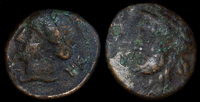
Sesamos, Paphlagonia 4th c. BCE

Skarpheia, Lokris 400-338 BCE
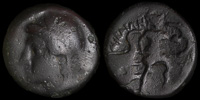
Thebai, Thessaly 302-286 BCE
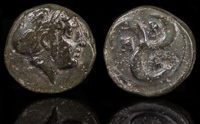
Thebe, Mysia 300-200 BCE
